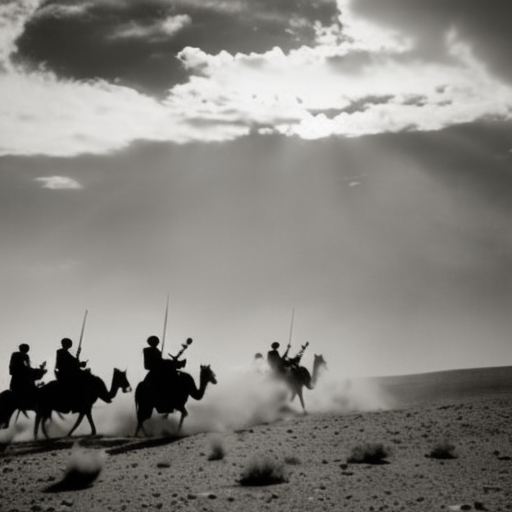Battle of Amba Aradam: A Defining Moment in the Second Italo-Ethiopian War
The Battle of Amba Aradam was a crucial military engagement that took place during the Second Italo-Ethiopian War from February 10 to 19, 1936. It marked a turning point in the conflict, as Ethiopian forces successfully defended their position against the advancing Italian army. The battle occurred near the town of Amba Aradam in northern Ethiopia and resulted in a significant loss for the Italians.
Background:
The Second Italo-Ethiopian War began in 1935 when Italy, under the leadership of Benito Mussolini, invaded Ethiopia with the aim of establishing an Italian colony. The Ethiopian Emperor, Haile Selassie, sought to defend his country’s independence and sovereignty. The conflict quickly escalated into a full-scale war, with both sides mobilizing their forces.
Italian Offensive:
The Italian army, equipped with modern weapons and superior firepower, launched a series of offensives to conquer Ethiopia. Their initial advances were successful, and they captured several key cities and territories. However, the Ethiopian resistance remained strong, and their guerrilla tactics made it difficult for the Italians to maintain control over the occupied areas.
The Battle:
The Battle of Amba Aradam was a strategically important engagement for both sides. The Italians aimed to break through the Ethiopian defenses and continue their advance towards the capital, Addis Ababa. On the other hand, the Ethiopians saw this battle as an opportunity to halt the Italian offensive and regain lost territory.
The Ethiopian forces, led by Ras Kassa Haile Darge, had fortified their position on the Amba Aradam mountain range. They dug trenches, set up machine gun nests, and positioned artillery to defend against the Italian assault. The Italians, under General Rodolfo Graziani, launched a series of attacks but were met with fierce resistance.
The Ethiopian defenders used their knowledge of the terrain to their advantage, employing guerrilla tactics and launching counterattacks. They also had the support of local militias and irregular forces, who fought alongside the regular Ethiopian army. The Italians, despite their numerical and technological superiority, struggled to make significant progress.
Italian Defeat:
The Battle of Amba Aradam ended in a decisive victory for the Ethiopian forces. The Italians suffered heavy casualties and were unable to break through the Ethiopian defenses. The mountainous terrain, combined with the determined resistance of the Ethiopians, proved to be a significant obstacle for the Italian army.
The defeat at Amba Aradam had a demoralizing effect on the Italian forces and slowed down their advance. It also boosted the morale of the Ethiopian resistance and inspired other Ethiopians to join the fight against the Italian invaders.
Aftermath:
The Battle of Amba Aradam was a turning point in the Second Italo-Ethiopian War. Although the Italians eventually captured Addis Ababa and occupied Ethiopia, the battle demonstrated the resilience and determination of the Ethiopian people. It also highlighted the limitations of Italian military power and the challenges they faced in conquering a determined and resourceful enemy.
The battle had broader implications as well. The international community took notice of the Ethiopian resistance and condemned Italy’s aggression. The League of Nations imposed economic sanctions on Italy, although they were largely ineffective in stopping the Italian invasion.
In conclusion, the Battle of Amba Aradam was a significant event in the Second Italo-Ethiopian War. It showcased the bravery and determination of the Ethiopian forces in defending their homeland against a technologically superior enemy. The battle’s outcome had a profound impact on the morale of both sides and influenced the course of the war. Despite the ultimate Italian victory, the Battle of Amba Aradam remains a symbol of Ethiopian resistance and the fight for independence.












